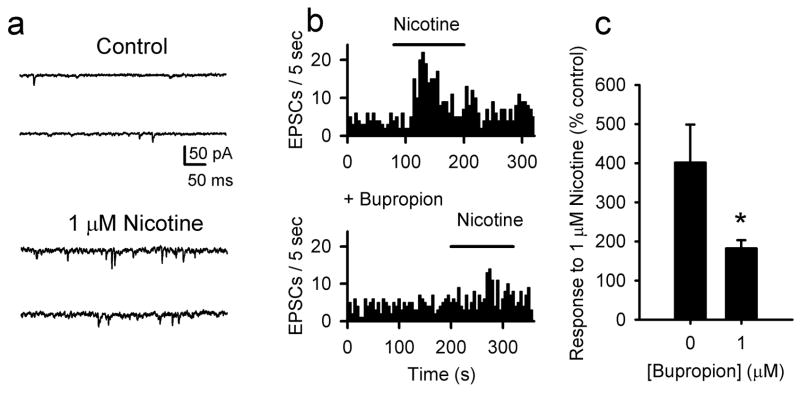Figure 2.
Enhancement of excitatory glutamatergic transmission by nicotine is inhibited by bupropion. a) Bath application of 1 μM nicotine enhances the frequency of spontaneous EPSCs. In addition, nicotine also increases the noise in the recording, due to the activation of postsynaptic nAChRs, as in the traces of Figure 1c. To reliably detect individual EPSCs, amplitude, surface area and rise time thresholds were set with the amplitude threshold at least 5 times the RMS noise measured in the presence of nicotine (see Methods)[20]. b) Histograms of EPSC frequency with and without 1 μM bupropion pretreatment. c) Summary graph illustrating the average % change in EPSC frequency following nicotine treatment with and without 1 μM bupropion. These averages include data from only those cells with statistically significant difference in frequency following nicotine treatment. Nicotine only n = 13 of 21; bupropion + nicotine, n = 7 of 12; * p < 0.05.

